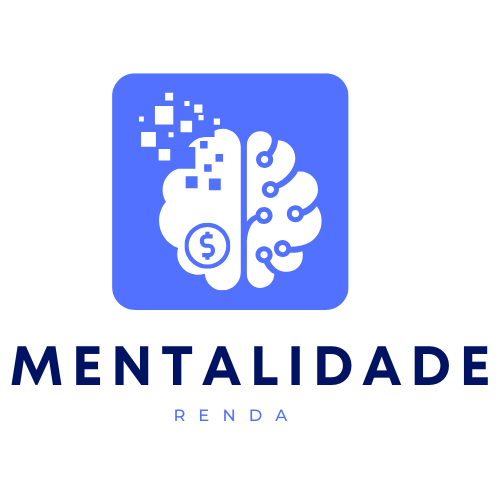In today’s digital world, visual content plays a crucial role in engaging audiences, building brand identities, and conveying messages effectively. However, creating high-quality visual content can be time-consuming and challenging, especially if you don’t have advanced design skills. The good news is that Artificial Intelligence (AI) is revolutionizing the way we create visuals, making it easier, faster, and more accessible than ever before. In this article, we’ll explore how AI is transforming the visual content creation process and the tools that are changing the game for businesses, creators, and marketers.

1. AI-Powered Design Tools: Making Graphic Design Accessible
AI is making graphic design accessible to everyone, even those without professional design skills. With the help of AI-powered tools, anyone can create stunning visuals for social media, websites, and other marketing materials.
How AI helps with graphic design:
- Canva: Canva is one of the most popular AI-powered design tools. It allows you to create social media graphics, presentations, posters, and more using its extensive library of templates and design elements. AI in Canva suggests color schemes, fonts, and layouts that work well together, making it easy for anyone to create professional-looking designs.
- Crello: Similar to Canva, Crello uses AI to help users create high-quality graphics quickly. It offers a wide range of customizable templates, animations, and design features that simplify the creative process.
- Adobe Spark: Adobe Spark utilizes AI to streamline the design process. It provides AI-powered suggestions for color palettes, typography, and layouts, making it easy to create cohesive and visually appealing designs without needing design experience.
Why use it:
AI-powered design tools help you create professional and consistent visuals in no time, regardless of your design skills. These tools save you time and effort by automating aspects of the design process and offering smart suggestions.
2. AI for Video Creation: Automating the Process
Videos have become an essential form of content for social media, marketing, and education. However, creating high-quality videos often requires expertise and editing skills. AI is changing this by automating the video creation process, making it faster and more accessible.
How AI helps with video creation:
- Lumen5: Lumen5 uses AI to convert blog posts, articles, and scripts into engaging videos. It automatically selects relevant visuals, music, and transitions to match the tone of the content. Users can also customize these elements for further personalization.
- Animoto: Animoto simplifies video creation by offering AI-powered templates for creating video slideshows. You can upload your images or video clips, and Animoto automatically arranges them with transitions and music, making it easy to create professional videos for social media.
- Magisto: Magisto is an AI-driven video editing tool that automatically edits and enhances videos. It analyzes footage, selects the best parts, and adds effects, transitions, and music to create engaging, shareable videos in minutes.
Why use it:
AI video creation tools help automate the video editing process, saving you time and effort. These tools simplify the video production process, allowing you to focus on your content rather than spending hours on editing.
3. AI for Image Editing and Enhancement: Elevating Your Visuals
Editing photos and images to make them stand out can be a tedious task. AI is transforming the image editing process by automating enhancements, making your images look more professional without the need for advanced editing skills.
How AI helps with image editing:
- Fotor: Fotor is an AI-powered photo editor that allows you to enhance your images with a single click. It can automatically adjust brightness, contrast, and saturation to make your photos look more vibrant and professional.
- Luminar AI: Luminar AI uses artificial intelligence to analyze your photos and make adjustments based on what’s needed. It can enhance details, adjust lighting, and add artistic effects like bokeh or skin retouching.
- Remove.bg: Remove.bg uses AI to automatically remove backgrounds from images, which is useful for creating clean and professional product photos, profile pictures, or social media posts.
Why use it:
AI-powered image editing tools help you improve the quality of your photos with minimal effort. These tools can automatically fix lighting issues, enhance details, and even remove unwanted elements from your images, ensuring they look polished and ready for social media.
4. AI for Content Personalization: Tailoring Visuals to Your Audience
Personalized content is more engaging and effective. AI tools can analyze your audience’s preferences and behavior to create visuals that are tailored to their tastes and needs. This ensures that your content resonates with your followers, increasing engagement and conversion rates.
How AI helps with content personalization:
- BuzzSumo: BuzzSumo uses AI to analyze trending topics and content in your niche. By understanding what your audience is interested in, BuzzSumo helps you create content that is relevant and engaging.
- Tailwind: Tailwind is an AI-powered platform for Pinterest and Instagram that helps you schedule posts and optimize your content based on audience behavior. It provides recommendations for the best times to post and suggests relevant visuals to maximize engagement.
- Copy.ai: Copy.ai helps generate engaging captions and copy that are tailored to your audience. It analyzes trends and audience behavior to suggest text that resonates with your followers.
Why use it:
AI-driven personalization tools help you create content that is specifically designed to attract and engage your target audience. This level of personalization improves the effectiveness of your visuals, making them more likely to generate interest and interaction.
5. AI for Social Media Strategy and Content Scheduling
Creating great visuals is just one part of the equation; effectively distributing your content is equally important. AI tools can help you plan your social media strategy, optimize posting schedules, and ensure your content reaches the right audience at the right time.
How AI helps with strategy and scheduling:
- Hootsuite: Hootsuite uses AI to suggest the best times to post on various social media platforms, based on when your audience is most active. It also provides analytics that help you optimize your content strategy and track engagement.
- Sprout Social: Sprout Social’s AI-powered analytics help you understand the performance of your social media posts. It offers insights into audience behavior, trends, and engagement metrics, helping you adjust your strategy for better results.
- Later: Later is an AI-based social media scheduling tool that automates the posting process and helps you plan your content calendar. It can suggest the best times to post and automatically schedule your visuals for maximum impact.
Why use it:
AI tools for social media scheduling and strategy help you ensure your content reaches the right people at the optimal time. These tools provide insights and recommendations to maximize engagement, allowing you to focus on content creation rather than timing and distribution.
6. AI for Augmented Reality (AR) Filters and Effects
AR filters and effects are becoming increasingly popular on platforms like Instagram and Snapchat. AI is powering the creation of these interactive visual elements, allowing users to add unique and engaging effects to their images and videos.
How AI helps with AR filters and effects:
- Snapchat Lenses: Snapchat uses AI to create interactive AR filters and lenses that can be applied to photos and videos. These filters allow users to transform their appearance, add effects, and make their content more fun and engaging.
- Instagram Effects: Instagram’s AI-powered effects and filters can automatically adjust lighting, apply makeup, or change backgrounds, making it easy for users to create fun and visually appealing content.
- Spark AR Studio: Spark AR Studio allows creators to design custom AR effects and filters for Instagram and Facebook. AI is used to create interactive and dynamic experiences, allowing users to add virtual elements to their photos and videos.
Why use it:
AI-powered AR tools make it easy to add interactive and engaging visual effects to your social media content, helping you stand out and capture your audience’s attention with unique experiences.
Conclusion
AI is transforming the way we create and interact with visual content. From automating the design process and enhancing images to personalizing content and optimizing social media strategies, AI tools are making visual content creation more efficient, accessible, and engaging. Whether you’re a marketer, content creator, or business owner, embracing AI can help you streamline your workflow, create high-quality visuals, and better connect with your audience.
By using AI-powered tools like Canva, Luminar AI, Lumen5, and Sprout Social, you can take your content creation to the next level, producing professional visuals that resonate with your audience and drive better engagement on social media. As AI continues to evolve, it will undoubtedly unlock even more creative possibilities for visual content creation.
